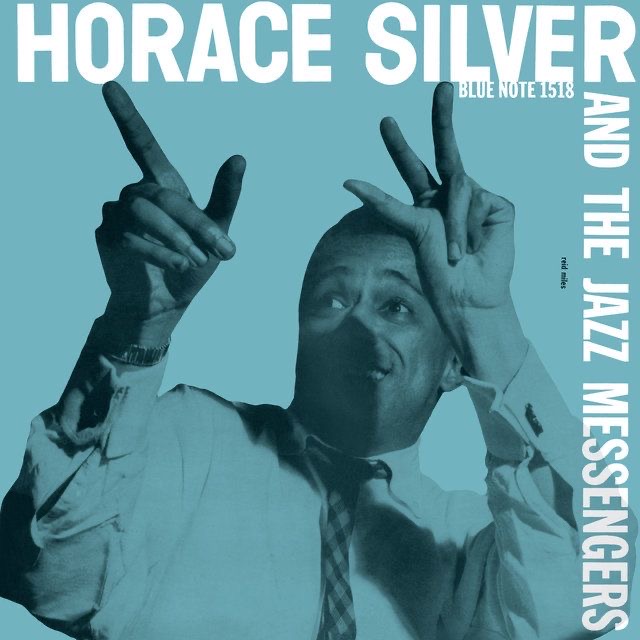Dive into the Power & Passion of ‘Tenor Madness
In the vast panorama of jazz, Sonny Rollins’ “Tenor…
In the mid-1950s, the world of jazz was undergoing an awakening, a metamorphosis that was about to birth a new driving force known as hard bop. Among the pioneers of this era, Horace Silver and the Jazz Messengers stood out as a beacon of innovation, their music a vibrant dance of hard-driving rhythms and unforgettable melodies. In this exploration, we will delve into the intricacies of their eponymous album, journeying through the musicians, the music, and the lasting impact of this magnum opus in jazz history.

The room was electric on that fateful day in 1954 when the Jazz Messengers gathered at the home studio of the legendary engineer Rudy Van Gelder. Transforming his parents’ living room in Hackensack, New Jersey, into a makeshift sanctuary of sound, Van Gelder bore witness to the creation of countless legendary jazz albums. And there, within those hallowed walls, the self-titled album “Horace Silver and the Jazz Messengers” came to life, bearing the proud emblem of the Blue Note label that would go on to champion the innovative spirit of jazz.
As the needle touches down on the turntable, I am immediately enveloped by the crystal-clear sound quality and serene silence of the vinyl. The warmth and richness of the analog recording create an intimate sonic landscape, enabling me to fully savor the complex interplay between the musicians and their instruments. The album’s cover art, masterfully designed by the visionary Reid Miles, evokes a powerful and unforgettable image that has earned its place as an icon in its own right—a visual embodiment of the album’s lasting cultural impact.
Horace Silver, the maestro at the piano, leads a formidable ensemble of virtuosos that would come to define the hard bop sound. Art Blakey, the powerhouse behind the drums; Kenny Dorham, the trumpet prodigy whose notes soared and dipped like a bird in flight; Hank Mobley, the tenor saxophonist whose sinuous melodies wove an intricate web of sound; and Doug Watkins, the bassist whose rhythmic foundation grounded the group and brought cohesion to their artistry. Each musician, already well-established within the jazz scene, brought a unique voice to the table, fusing their talents into a groundbreaking collaboration that would set the stage for the Jazz Messengers.
“Room 608” bursts forth from the speakers, a torrent of fast-paced unison themes, showcasing Kenny Dorham’s virtuosic trumpet playing and Hank Mobley’s swinging tenor saxophone solos. Horace Silver’s piano work shines through as well, providing a solid foundation for the rest of the group.
“Creepin’ In” sets a slow, sultry mood with its minor-key melody and bluesy feel. Each musician contributes to the song’s atmosphere, weaving a rich tapestry of sound that invites the listener to get lost in the music.
“Stop Time” features a series of fast unison breaks and piano fill-ins, highlighting the incredible musicianship of the entire ensemble. The song provides an opportunity for each member to showcase their skills, with standout solos from Dorham, Mobley, Silver, and Blakey.
Horace Silver’s compositions on this album helped define the hard bop sound, characterized by strong melodies, blues and gospel influences, rhythmic grooves, expressive solos, and tight ensemble interplay. This combination of elements created a distinct sound that would become synonymous with the Jazz Messengers and influence countless jazz musicians in the years to come.
Upon its release in 1955, “Horace Silver and the Jazz Messengers” was well-received by critics and audiences alike. The album played a significant role in popularizing the hard bop movement and established the Jazz Messengers as a formidable force in the jazz scene. The record’s raw energy, captivating melodies, and infectious grooves resonated with listeners, propelling the group to new heights and solidifying their status as pioneers of the genre.
Today, the album’s importance and impact remain as potent as ever. With the passage of time, its influence has only grown, serving as an essential touchstone for generations of jazz musicians and enthusiasts. The record has become a shining example of the hard bop style, and its compositions continue to be performed and reinterpreted by artists across the globe. The legacy of Horace Silver and the Jazz Messengers endures, a testament to the timeless appeal of their music and their pioneering spirit.
In conclusion, “Horace Silver and the Jazz Messengers” stands as a monumental work in the annals of jazz history. The album captures the essence of hard bop, weaving together the unique voices of its talented musicians into a cohesive and exhilarating whole. As the needle lifts from the turntable and the last notes fade away, the listener is left with a profound sense of appreciation for the power of collaboration, creativity, and the unyielding spirit of innovation that defines the world of jazz. And as we continue to explore the vast universe of music, the album’s legacy will live on, inspiring new generations to push the boundaries of jazz and carry the torch of the Jazz Messengers forward into the future.